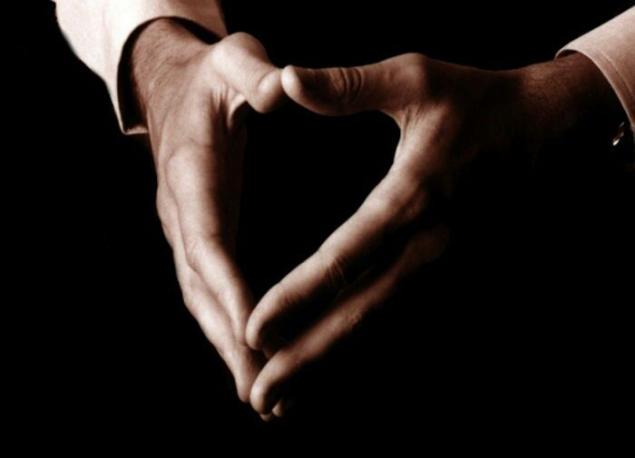544
Sign language: 8 of signals to which most people react
True leaders learn not only business, but also in appearance and gesture. The 8 most common signals that people most react describes Ailey, MacKinnon in the Wall Street Journal
Managers are always in sight, wherever they may be, at a personal meeting or in front of a crowd of thousands they send to others non-verbal cues from which people draw conclusions about how these leaders are sincere, how reliable they are. Studies show that you need to find the right balance between the demonstration of power and authority, on the one hand, and warmth and compassion on the other. If you send too many signals reputable, you can count too alienated. But if you show too much heat, it is harder to stand out and seize the attention of others.

Here are some of the most important signals of this kind:
Keep your head straight.
Talking with the audience, a leader needs to keep his head straight, do not tilt it from side to side, says Carol Goman, Executive coach and author of The Silent Language of Leaders. You can gently tip the head back — but just slightly, otherwise you'll become an arrogant person.
A growing smile. Smile need to use sparingly: when a man smiles too much, he may find weak. Effectively, when you smile at first barely, but then wider and wider as you go around the room or pass through the scene, says Goman.Eye contact.
There is also a restraint, says Goman. When you do avoiding to meet eyes with people, they may think that they are deceiving you. But if you do it all the time, such views are perceived as Intrusive. Goman advises to focus on the triangle that form the eyes and forehead. If you look below the eye, it can be perceived as not too business-like, improper attitude.
Instructions.
When you point at something, it is better to send the whole hand, not just your index finger, says Joe Navarro, a former FBI agent and author of What Every Body is Saying. Experiments with the jury showed that when a person uses only the index finger, it looks too aggressive, and people feel uncomfortable.

Calming gestures.
When people are anxious, they often touch the neck, tighten the collar or raise the arm hair, says Navarro. Leaders should avoid such actions because they are expected to calm and control; if a leader shows concern, all the other worries, too. It is also worth to pay attention to such gestures from the staff — perhaps this suggests that they first need to achieve a certain comfort before you start to work productively.
Her clasped hands.
When you sit or stand, palms together in "prayer" position, helping to convey to others that you believe in yourself, says Navarro, who conducted such experiments.
In motion.
Leaders should not hide behind the chair — need to move around the stage during the performance to convey the energy and interest of students, says Professor at Harvard business school, Amy Cuddy. It is best to walk on stage, pause, and then start moving again. Too many moves, too confusing.
The power of pause.
When people speak slowly and make a pause, this adds to their credibility. The faster you talk, the less authoritative you seem the audience, says Cuddy. published
P. S. And remember, only by changing their consumption — together we change the world! ©
Source: ideanomics.ru/articles/7747
Managers are always in sight, wherever they may be, at a personal meeting or in front of a crowd of thousands they send to others non-verbal cues from which people draw conclusions about how these leaders are sincere, how reliable they are. Studies show that you need to find the right balance between the demonstration of power and authority, on the one hand, and warmth and compassion on the other. If you send too many signals reputable, you can count too alienated. But if you show too much heat, it is harder to stand out and seize the attention of others.

Here are some of the most important signals of this kind:
Keep your head straight.
Talking with the audience, a leader needs to keep his head straight, do not tilt it from side to side, says Carol Goman, Executive coach and author of The Silent Language of Leaders. You can gently tip the head back — but just slightly, otherwise you'll become an arrogant person.
A growing smile. Smile need to use sparingly: when a man smiles too much, he may find weak. Effectively, when you smile at first barely, but then wider and wider as you go around the room or pass through the scene, says Goman.Eye contact.
There is also a restraint, says Goman. When you do avoiding to meet eyes with people, they may think that they are deceiving you. But if you do it all the time, such views are perceived as Intrusive. Goman advises to focus on the triangle that form the eyes and forehead. If you look below the eye, it can be perceived as not too business-like, improper attitude.
Instructions.
When you point at something, it is better to send the whole hand, not just your index finger, says Joe Navarro, a former FBI agent and author of What Every Body is Saying. Experiments with the jury showed that when a person uses only the index finger, it looks too aggressive, and people feel uncomfortable.

Calming gestures.
When people are anxious, they often touch the neck, tighten the collar or raise the arm hair, says Navarro. Leaders should avoid such actions because they are expected to calm and control; if a leader shows concern, all the other worries, too. It is also worth to pay attention to such gestures from the staff — perhaps this suggests that they first need to achieve a certain comfort before you start to work productively.
Her clasped hands.
When you sit or stand, palms together in "prayer" position, helping to convey to others that you believe in yourself, says Navarro, who conducted such experiments.
In motion.
Leaders should not hide behind the chair — need to move around the stage during the performance to convey the energy and interest of students, says Professor at Harvard business school, Amy Cuddy. It is best to walk on stage, pause, and then start moving again. Too many moves, too confusing.
The power of pause.
When people speak slowly and make a pause, this adds to their credibility. The faster you talk, the less authoritative you seem the audience, says Cuddy. published
P. S. And remember, only by changing their consumption — together we change the world! ©
Source: ideanomics.ru/articles/7747























